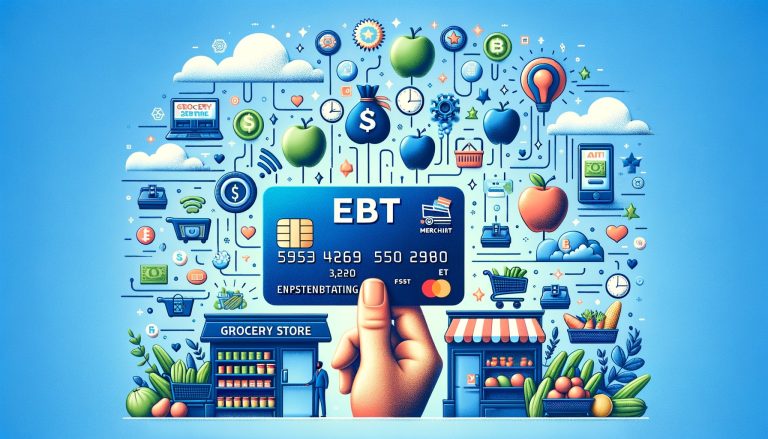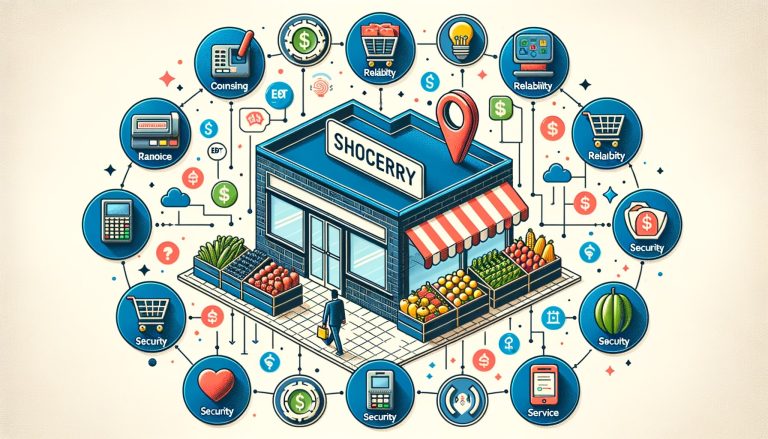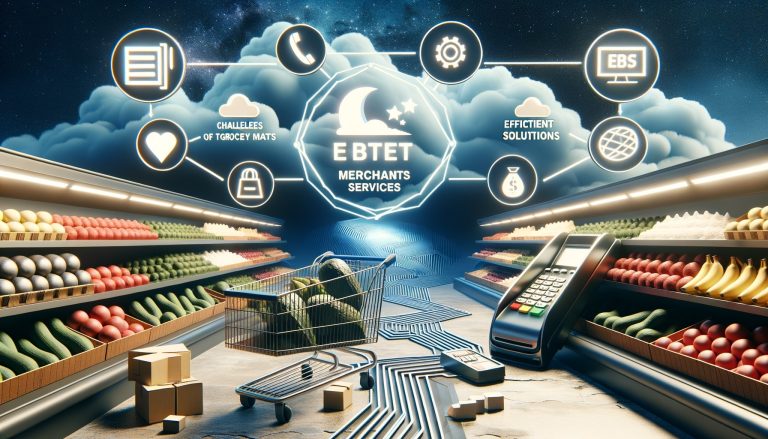
By manoj November 27, 2024
In today’s digital age, electronic payment methods have become increasingly popular, and grocery stores are no exception. Electronic Benefit Transfer (EBT) merchant services have emerged as a crucial tool for grocery stores to accept payments from customers who rely on government assistance programs such as the Supplemental Nutrition Assistance Program (SNAP).
This comprehensive article will delve into the importance of EBT merchant services for grocery stores, explaining what they are, how they work, their benefits, and how to choose the right service provider. Additionally, we will explore the step-by-step process of implementing EBT merchant services, common challenges faced by grocery stores, compliance and security considerations, and strategies to maximize sales and customer satisfaction.
What are EBT Merchant Services and How Do They Work?
EBT merchant services are electronic payment processing systems that enable grocery stores to accept payments from customers using government-issued EBT cards. These cards function similarly to debit cards, allowing individuals to access their benefits and purchase eligible food items. EBT merchant services work by connecting the grocery store’s point-of-sale (POS) system to the EBT network, facilitating secure and efficient transactions. When a customer makes a purchase using their EBT card, the transaction is processed in real-time, deducting the amount from their available balance.
Benefits of EBT Merchant Services for Grocery Stores

- Expanding Customer Base: By accepting EBT payments, grocery stores can cater to a larger customer base, including individuals and families who rely on government assistance programs. This not only increases sales but also promotes inclusivity and accessibility.
- Streamlined Transactions: EBT merchant services offer a seamless payment experience for both customers and store owners. The integration of EBT processing with the existing POS system eliminates the need for separate transactions, reducing checkout time and enhancing operational efficiency.
- Increased Revenue: Accepting EBT payments can significantly boost a grocery store’s revenue. According to the United States Department of Agriculture (USDA), SNAP benefits accounted for over $63 billion in sales at authorized retailers in 2020. By tapping into this market, grocery stores can tap into a substantial source of revenue.
- Reduced Cash Handling: EBT merchant services minimize the need for cash transactions, reducing the risks associated with cash handling, such as theft and human error. This promotes a safer and more secure environment for both customers and store employees.
- Enhanced Reporting and Analytics: EBT merchant services provide detailed reporting and analytics capabilities, allowing grocery store owners to gain insights into sales trends, customer preferences, and inventory management. This data can be leveraged to make informed business decisions and optimize operations.
How to Choose the Right EBT Merchant Service Provider for Your Grocery Store

Selecting the right EBT merchant service provider is crucial for the smooth operation of a grocery store. Here are some factors to consider when choosing a provider:
- Compatibility: Ensure that the EBT merchant service provider is compatible with your existing POS system. Seamless integration is essential to avoid disruptions in operations and minimize training requirements for staff.
- Reliability and Security: Look for a provider that offers robust security measures to protect sensitive customer data and prevent fraud. Additionally, consider the provider’s uptime and reliability track record to ensure uninterrupted service.
- Cost and Pricing Structure: Evaluate the pricing structure of different EBT merchant service providers, including transaction fees, setup costs, and ongoing maintenance charges. Compare these costs with the benefits and features offered to make an informed decision.
- Customer Support: Opt for a provider that offers reliable customer support, including technical assistance and troubleshooting. Prompt and efficient support is crucial to minimize downtime and address any issues that may arise.
- Additional Features and Services: Consider the additional features and services offered by the provider, such as inventory management, loyalty programs, and marketing tools. These value-added services can enhance the overall efficiency and profitability of your grocery store.
Implementing EBT Merchant Services: Step-by-Step Guide for Grocery Store Owners

Implementing EBT merchant services in a grocery store requires careful planning and execution. Here is a step-by-step guide to help grocery store owners navigate the implementation process:
- Research and Select a Provider: Conduct thorough research to identify reputable EBT merchant service providers that meet your requirements. Evaluate their features, pricing, and customer reviews to make an informed decision.
- Contact the Provider: Reach out to the selected provider to initiate the onboarding process. Discuss your specific needs and requirements, and seek clarification on any doubts or concerns.
- Obtain Necessary Equipment: Depending on your existing infrastructure, you may need to acquire additional equipment to support EBT transactions. This may include EBT-compatible card readers or software updates for your POS system.
- Complete Application and Documentation: Work closely with the EBT merchant service provider to complete the necessary application and documentation process. This typically involves providing business information, financial details, and any required licenses or permits.
- Integration and Testing: Once the application is approved, the provider will guide you through the integration process. This may involve installing software, configuring settings, and conducting thorough testing to ensure seamless functionality.
- Staff Training: Train your staff on how to process EBT transactions and address any questions or concerns they may have. Familiarize them with the EBT card acceptance process, including the necessary steps and any specific guidelines.
- Promote EBT Acceptance: Inform your customers about your new EBT acceptance capability through in-store signage, social media, and other marketing channels. Highlight the convenience and benefits of using EBT cards for their grocery purchases.
- Monitor and Optimize: Continuously monitor the performance of your EBT merchant services, including transaction volumes, customer feedback, and any technical issues. Leverage the reporting and analytics capabilities provided by your service provider to identify areas for improvement and optimize operations.
Common Challenges and Solutions for Grocery Stores Using EBT Merchant Services

While EBT merchant services offer numerous benefits, grocery stores may encounter certain challenges during their implementation and usage. Here are some common challenges and their potential solutions:
- Technical Issues: Technical glitches or connectivity problems can disrupt EBT transactions, leading to customer dissatisfaction and loss of sales. To mitigate this, ensure that your equipment is regularly maintained, and promptly address any technical issues that arise. Maintain a backup plan, such as manual voucher processing, to handle emergencies.
- Training and Education: Staff members may require training and education on EBT processing procedures, including handling different types of EBT cards and resolving customer queries. Invest in comprehensive training programs to ensure that your staff is well-equipped to handle EBT transactions efficiently.
- Compliance with Regulations: Grocery stores accepting EBT payments must comply with strict regulations set by government agencies. Stay updated with the latest guidelines and ensure that your store adheres to all requirements, such as eligible food items, transaction limits, and record-keeping obligations.
- Fraud Prevention: EBT cards are susceptible to fraudulent activities, such as unauthorized use or card cloning. Implement robust security measures, such as encryption and tokenization, to protect customer data and prevent fraudulent transactions. Train your staff to identify suspicious activities and report them promptly.
- Customer Support: Prompt and efficient customer support is crucial for resolving any issues or concerns raised by EBT cardholders. Ensure that your staff is trained to handle customer queries related to EBT transactions and provide timely assistance.
Ensuring Compliance and Security with EBT Merchant Services in Grocery Stores
Compliance and security are paramount when implementing EBT merchant services in grocery stores. Here are some key considerations to ensure compliance and maintain a secure environment:
- Familiarize Yourself with Regulations: Stay updated with the regulations and guidelines set by government agencies, such as the USDA and the Food and Nutrition Service (FNS). Understand the eligibility criteria for SNAP benefits, approved food items, and transaction limits.
- Train Staff on Compliance: Educate your staff on the compliance requirements associated with EBT transactions. Ensure that they are aware of the rules and regulations governing EBT payments, including the consequences of non-compliance.
- Secure Data Transmission: Implement secure data transmission protocols, such as Secure Sockets Layer (SSL) or Transport Layer Security (TLS), to protect customer data during EBT transactions. Encrypt sensitive information to prevent unauthorized access.
- PCI DSS Compliance: The Payment Card Industry Data Security Standard (PCI DSS) applies to all businesses that accept payment cards, including EBT cards. Ensure that your grocery store is PCI DSS compliant to safeguard customer data and prevent data breaches.
- Regular Security Audits: Conduct regular security audits to identify vulnerabilities in your EBT merchant services infrastructure. Engage third-party security experts to assess your systems and recommend necessary improvements.
Maximizing Sales and Customer Satisfaction with EBT Merchant Services
EBT merchant services can be leveraged to maximize sales and enhance customer satisfaction in grocery stores. Here are some strategies to achieve these goals:
- Optimize Product Placement: Arrange eligible food items in prominent locations within your store to attract EBT cardholders. Highlight discounts or special offers on these items to incentivize purchases.
- Offer Additional Services: Consider offering additional services, such as online ordering and home delivery, to cater to the needs of EBT cardholders who may face transportation or mobility challenges. This expands your customer base and enhances convenience.
- Loyalty Programs: Implement a loyalty program specifically designed for EBT cardholders. Offer rewards or discounts on future purchases to encourage repeat business and foster customer loyalty.
- Educate Customers: Provide educational materials and resources to EBT cardholders, informing them about healthy food choices, meal planning, and budgeting tips. This not only promotes healthier eating habits but also positions your store as a trusted resource.
- Collaborate with Community Organizations: Partner with local community organizations or food banks to organize workshops or events focused on nutrition education and healthy cooking. This demonstrates your commitment to the community and fosters goodwill.
Frequently Asked Questions (FAQs)
Q1. What is an EBT card?
An EBT card is a government-issued card that allows individuals to access their benefits from government assistance programs, such as SNAP. It functions similarly to a debit card and can be used to purchase eligible food items at authorized retailers.
Q2. Can EBT cards be used for non-food items?
No, EBT cards can only be used to purchase eligible food items. Non-food items, such as household supplies or personal care products, cannot be purchased using EBT benefits.
Q3. How long does it take for EBT transactions to be processed?
EBT transactions are processed in real-time, similar to debit card transactions. The amount is deducted from the customer’s available balance immediately, and the transaction is reflected on their EBT account.
Q4. Can EBT cards be used for online grocery shopping?
Yes, EBT cards can be used for online grocery shopping in select states. The USDA has launched a pilot program called the Online Purchasing Pilot, allowing SNAP participants to use their EBT cards to purchase groceries online from authorized retailers.
Q5. Are there any transaction limits for EBT payments?
Yes, there are transaction limits for EBT payments. The limits vary by state and are typically set to prevent abuse or misuse of benefits. Grocery store owners should familiarize themselves with the transaction limits applicable in their state.
Conclusion
EBT merchant services play a vital role in the success of grocery stores by enabling them to accept payments from customers who rely on government assistance programs. These services offer numerous benefits, including expanding the customer base, streamlining transactions, increasing revenue, reducing cash handling, and providing enhanced reporting and analytics capabilities.
Selecting the right EBT merchant service provider is crucial, considering factors such as compatibility, reliability, cost, customer support, and additional features. Implementing EBT merchant services requires careful planning, staff training, and promotion to ensure a seamless transition. Grocery stores may face challenges such as technical issues, compliance requirements, and fraud prevention, which can be addressed through proper training, security measures, and customer support.
By ensuring compliance and security, grocery stores can maximize sales and customer satisfaction through optimized product placement, additional services, loyalty programs, customer education, and community collaborations. EBT merchant services are an essential tool for grocery stores to adapt to the digital age, cater to a diverse customer base, and thrive in a competitive market.